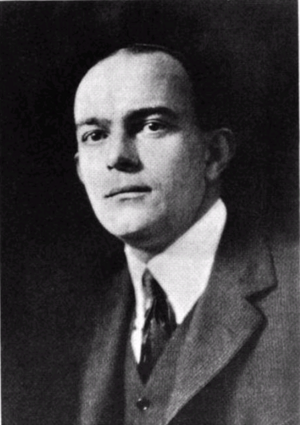C. Harold Wills facts for kids
Quick facts for kids
C. Harold Wills
|
|
|---|---|

C. Harold Wills, c. 1922
|
|
| Born |
Childe Harold Wills
June 1, 1878 Fort Wayne, Indiana, U.S.
|
| Died | December 30, 1940 (aged 62) Detroit, Michigan, U.S.
|
| Occupation | Businessman, engineer |
Childe Harold Wills (born June 1, 1878 – died December 30, 1940) was an American engineer and businessman. He was a very important person in the early days of the Ford Motor Company. He was one of the first people hired by Henry Ford and played a huge role in designing the famous Model T car. Later, he even started his own car company.
Contents
Early Life and Career
Childe Harold Wills was born in Fort Wayne, Indiana, in 1878. He was the youngest child in his family. He really disliked his first name, Childe, which came from a poem. So, he always went by his middle name, Harold, or his initials, C. H.
When he was about seven years old, his family moved to Detroit, Michigan. Harold was interested in both art and machines. His father, who was a railroad mechanic, taught him a lot about how machines work.
At 17, Harold began learning to be a toolmaker at the Detroit Lubricator Company. This was like an apprenticeship, where he learned a skill on the job for four years. At the same time, he took night classes to learn about metallurgy (the science of metals), chemistry, and mechanical engineering. By the time he was 23, he was already a chief engineer at another company called Burroughs Adding Machine Co.
Working with Henry Ford
Harold Wills was very interested in cars. In 1899, he started working part-time with Henry Ford. He helped Ford in the early mornings and late evenings at the Detroit Automobile Company. By 1902, Wills was working for Ford full-time, helping him build special racing cars.
When Henry Ford started the Ford Motor Company in 1903, Wills joined him as the main designer and expert on metals. Even though Wills didn't have enough money to buy shares in the new company, Ford promised him a share of his own profits.
Wills was key in helping Ford make cars on a large scale. He realized how important it was to use strong, lightweight steel. He found a way to produce a special type of steel called nickel-chrome vanadium steel. Ford used this strong metal in his Model N car in 1907.
Designing the Model T
Wills made many important contributions to the design of the Ford Model T. He helped create the special transmission system used in the Model T. He also designed the detachable cylinder head, which made car engines easier to repair.
Did you know that the famous script "Ford" logo, which is still used today, was also designed by C. Harold Wills? His early interest in art and calligraphy helped him create this iconic design.
During World War I, Wills was put in charge of producing the Liberty engine. This was a powerful engine used in airplanes.
Leaving Ford Motor Company
Over time, the friendship between Henry Ford and C. Harold Wills became difficult. In 1919, Wills decided to leave the Ford Motor Company. He received a large payment of $1.5 million from Ford. Plus, he had already made about $4 million from his smart investments in steel companies. This meant he had plenty of money to start his own business.
Starting His Own Car Company
With his new wealth, Wills decided to start his own car company called Wills Sainte Claire. He built a factory just north of Detroit, in a town he helped create called Marysville, Michigan. He even moved the town from its original spot to where it is today!
The first car model, called the Gray Goose, came out in 1921. It had a cool new feature: back-up lights! It's said that Wills invented these lights because he kept accidentally backing into fire hydrants. The Gray Goose was exciting, but it cost $3,000, which was a lot of money back then. Because of the high price, not many cars were sold, and the company lost money every year.
In 1927, Wills had to close his car company. Later, in 1933, the Chrysler company bought his factory.
Later Years
After closing his company, Wills worked as a consultant for Chrysler, helping them with metal science. He also earned money from the many inventions he had patented.
C. Harold Wills passed away in 1940 after suffering a stroke. He is buried in Detroit, Michigan.
Images for kids


